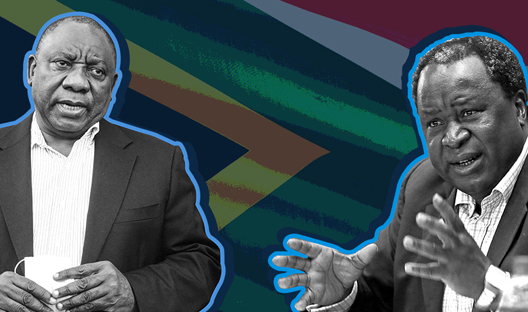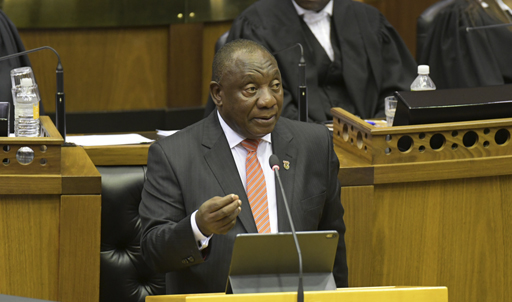Receive Focus insights straight to your inbox
Despite the disruption caused by the EFF, the SONA speech continued and it did not detract from President Ramaphosa’s overall message. A general perception is that the EFF used this opportunity to try to regain some of the initiative that they have lost since the end of the Zuma presidency and specifically their inability to act as the kingmaker in municipal politics of Nelson Mandela, Johannesburg and Tshwane metros.
The importance attached by President Ramaphosa to a social compact between stakeholders in the economy, was emphasised and was repeated several times during the speech. According to Prof Dirk Kotze from Unisa, a social compact is part of the framework of how President Ramaphosa visualises reaching sectoral master plans and how to create more social cohesion.
The overall objective is to bring the major stakeholders together in a partnership framework and to reduce the polarisation between the government, labour and the private sector. This type of framework can resolve the fragmentation/standoff between government and the other stakeholders and encourage a national consensus in the SA economy. This can help to promote/formalise a national vision and national unity.
President Ramaphosa is increasingly dictating the agenda and is gradually forging ahead with his economic reform programme. Most of the key focus points that we are watching were addressed to some degree.
These were the (1) state of the economy; (2) energy policy; (3) Eskom and debt restructuring; (4) public sector debt sustainability and containing the public sector wage bill; and (5) unemployment. A new sovereign wealth fund and state bank, which have come up in discussions, were added to the priorities.

Get all Investec's insights on the latest Budget Speech and SONA
Our economists, tax experts, personal finance and investment experts unpack what the latest fiscal measures mean for income, savings and daily expenses of individuals and businesses.

Key focus points of SONA
1. Comprehensive focus on the economy:
SONA 2020 has provided a more comprehensive focus on the economy than any of the three previous SONA speeches presented by President Ramaphosa since 2018. The acknowledgement that the economy is in crisis and that we are at a “decisive moment”, were stated upfront.
National Treasury’s economic plan was embraced and the energy sector and Eskom featured early in the speech. Job creation for young people was addressed, with the announcement of various initiatives, as well as a capable state, which is critical for service delivery. The SONA contained promises, with targets in some instances, although these were absent in the case of enhancing electricity supply.
Performance agreements with cabinet ministers have been signed, which implies more focus on results to ensure better implementation.
2. Certainty about energy policy has been provided, but we have missed timelines. The key is for the Minister of the DPME to sign the regulations to proceed:
- The decision that new generation capacity from renewable energy, natural gas, hydropower, battery storage and coal will go ahead. The focus has shifted to the Minister of DPME to issue a Section 34 Ministerial Determination to give effect to the Integrated Resource Plan 2019.
- Procurement of emergency power from projects that can deliver electricity into the grid within three to 12 months from approval.
- Nersa will continue to register small scale distributed generation for own use of under one MW, for which no licence is required.
- Nersa will ensure that all applications by commercial and industrial users to produce electricity for own use above 1MW are processed within the prescribed 120 days. There is now no limit to installed capacity above 1MW.
- Bid window 5 of the renewable energy IPP will be opened.
- The completion of Window 4 projects will be accelerated.
- Supplementary power purchase agreements to be negotiated to acquire additional capacity from existing wind and solar plants.
- Municipalities could procure their own power from independent power producers.
3. Eskom reconfiguration and debt restructuring:
CEO Andre de Ruyter’s plan for the splitting of Eskom into three units – generation, transmission and distribution – was reinforced. Each of the entities will have its own board and management structures.
Earlier in February, it was announced that the transmission unit would be “selfstanding” within a month. A social compact between the social partners was again mentioned and a meeting over the last two weeks was held to agree on the principles of a social compact on electricity.
This is critical if Eskom is to stand a chance to get back on its feet. “This requires both a drastic reduction in costs – including a review of irregular contracts – and measures to mobilise resources that will reduce Eskom’s debt and inject fresh capital where needed,” Cyril Ramaphosa. Eskom’s debt restructuring plan remains unclear.
4. Public debt sustainability:
A weak economy, which does not generate enough revenues and the composition of spending dominated by current spending and not enough on productive capacity, was acknowledged.
The 2020 Budget presented by the Minister of Finance on 26 February “will outline a series of measures to reduce spending and improve composition.” Moderating the increase in the public sector wage bill will be a key focus point. In the October 2019 MTBPS the Minister of Finance referred this to the February 2020 Budget, after engaging with the trade unions in the interim.
The public sector wage bill is forecast to rise by between 7.1% to 6.0% over the next three years compared to inflation, expected to average around 4.7%. Capex budgets and transfers to local authorities were again reduced in the MTBPS.
5. Making business easier:
Measures to make business easier include issuance of water licenses, registering a new business within a day and an overhaul of Durban port to reduce delays and costs. The latter being an example of a potential success story which can raise confidence and present the starting point for more progress.
6. Smaller SOEs:
Little detail was provided, aside from stating the need for a process of rationalisation and ensure that they serve strategic and developmental purposes. This was reiterated in the ANC’s Lekgotla document.
Comments about SAA, currently under business rescue, were limited to saying that plans will be unveiled to restructure the airline in the next few weeks. (The MTBPS has allocated R67bn of financial assistance to SOEs in F20/21, an amount similar to F19/20 – of which Eskom is the recipient of R56bn, leaving a balance of R11bn for other SOEs).
7. Infrastructure Fund:
Shovel-ready projects have been identified for student accommodation, social housing, independent water production, rail freight, embedded electricity generation, municipal bulk services and broadband layout (spectrum will be auctioned later in 2020). These are areas for PPPs and a new blended finance model, with capital from the government and the private sector. However, the turnaround time is again the critical factor.
8. A sovereign wealth fund and state bank will be established and the Minister of Finance will elaborate in the Budget he is presenting in two weeks.

Moody’s rating outlook on 27 March
We think that if the SONA address is anything to go by in terms of announcements about Eskom, energy policy and the public sector wage bill, a downgrade as early as next month could possibly be avoided.
However, the fiscal metrics could remain challenging – though they could possibly show an improved trajectory if the increase in the growth rate of public sector compensation is brought in line with inflation. Whether this could transpire as early as F20/21 as the three year wage agreement only ends in 2022, with an increase rate of 7.1%, remains to be seen.
Debt sustainability could remain a concern, as faster growth is the only way sustainably reduce the budget deficit and contain the acceleration in debt service costs (forecast to increase by an average rate of 13.4% over the MTEF period). In our view, fiscal consolidation in F20/21 is likely to rely on a combination of measures, i.e. tax increases, the proceeds generated by the auction of spectrum and, to a lesser degree, spending cuts, which will also include cuts in the capex budgets. Moody's revised South Africa 2020 GDP forecast down from 1% to 0.7%.
SAGB supply is expected to remain high (although we do not envisage an increase in issuance from current levels) but higher conviction that President Ramaphosa is switching gears from policy and processes to implementation, could lower the risk premium.
The current steepness of the SAGB yield has been caused by the risk premium widening to sub-IG level and an increase in SAGB bond supply.
A less steep yield curve and a smaller gap between nominal bond yields and nominal GDP is important to contain the rapid pace of growth in debt service costs, which could happen especially if the outer years of the MTEF period show a more concerted effort to rein in the the public sector wage bill and if some of the SONA priorities, such as investment in energy and infrastructure, translate into an acceleration in growth.




